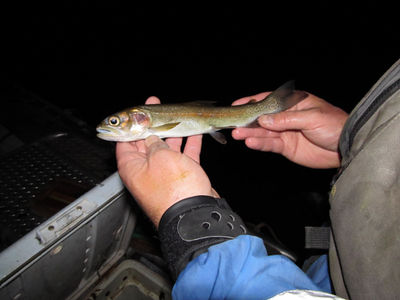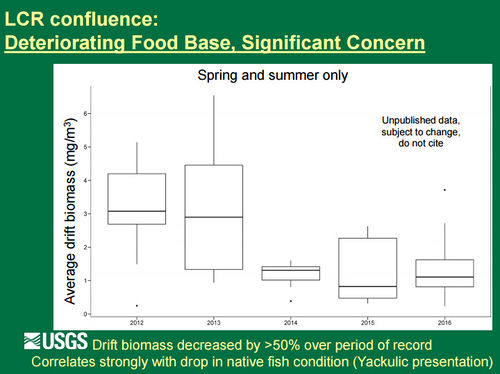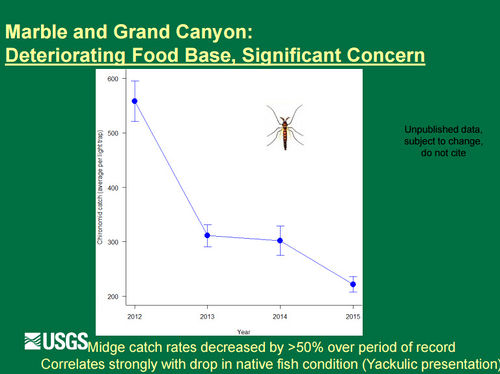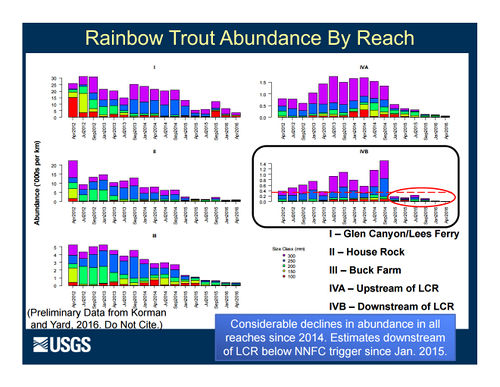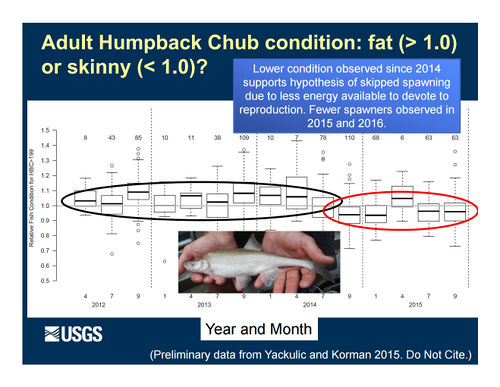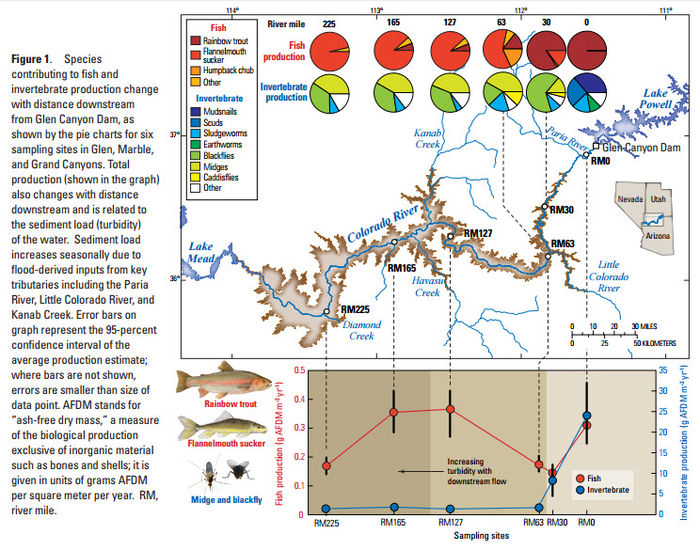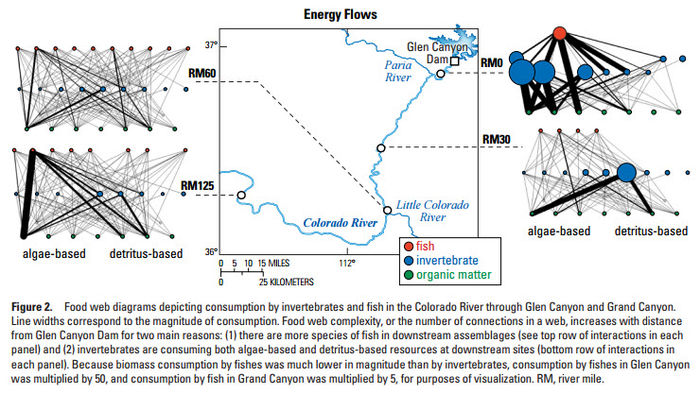Difference between revisions of "Foodwebs and Bioenergetics"
Cellsworth (Talk | contribs) |
Cellsworth (Talk | contribs) |
||
| Line 18: | Line 18: | ||
[[File:Skinny fish1.jpg.jpg|center|400px]] | [[File:Skinny fish1.jpg.jpg|center|400px]] | ||
| − | + | Skinny rainbow trout in Lees Ferry 2012 | |
<!-- | <!-- | ||
Revision as of 10:22, 4 April 2017
|
Skinny rainbow trout in Lees Ferry 2012 |
Foodwebs and Bioenergetics below Glen Canyon DamDuring periods of high fish abundance, food limitation can lead to extreme competition between rainbow trout and humpback chub for limited food resources resulting in large swings in in the trout population and skip spawning in the humpback chub population. These effects can be amplified by increasing water temperature if food production or availability don't correspondingly increase because warmer water increases fish metabolism requiring them to eat more food in order to maintain body condition. Recent food web studies (2006-2009) conducted in collaboration with University of Wyoming, Montana State University, Idaho State University, and the Cary Institute for Ecosystem Studies revealed that fish populations in the Colorado River downstream from Glen Canyon Dam appear to be limited by the availability of high-quality invertebrate prey. Midge and blackfly production is low and nonnative rainbow trout in Glen Canyon and native fishes in Grand Canyon consume virtually all of the midge and blackfly biomass that is produced annually. In Glen Canyon, the invertebrate assemblage is dominated by nonnative New Zealand mudsnails, the food web has a simple structure, and transfers of energy from the base of the web (algae) to the top of the web (rainbow trout) are inefficient. The food webs in Grand Canyon are more complex relative to Glen Canyon, because, on average, each species in the web is involved in more interactions and feeding connections. Based on theory and on studies from other ecosystems, the structure and organization of Grand Canyon food webs should make them more stable and less susceptible to large changes following perturbations of the flow regime relative to food webs in Glen Canyon. In support of this hypothesis, Grand Canyon food webs were much less affected by a 2008 controlled flood relative to the food web in Glen Canyon. [1] |
| -- |
-- |
-- |
|---|
